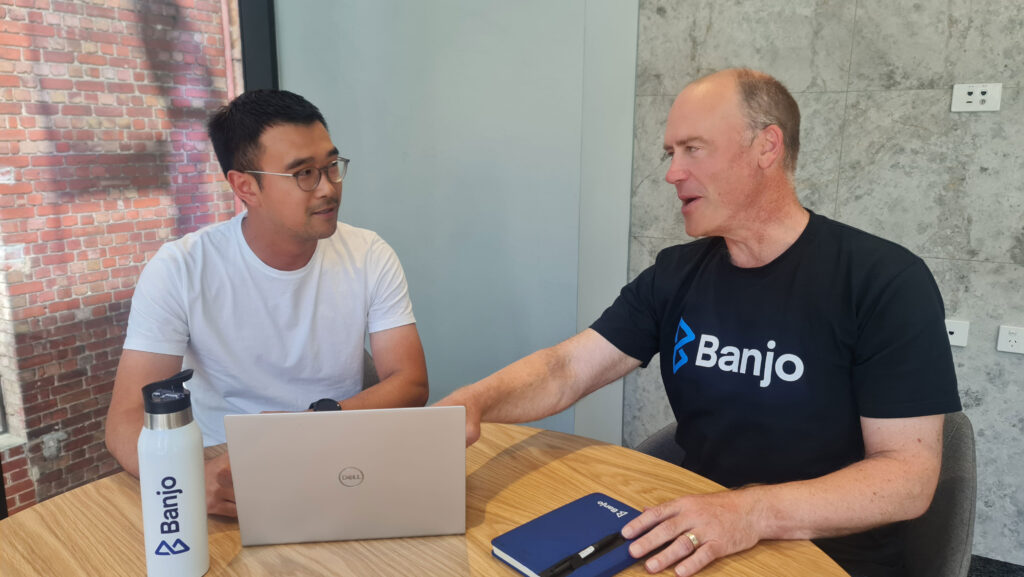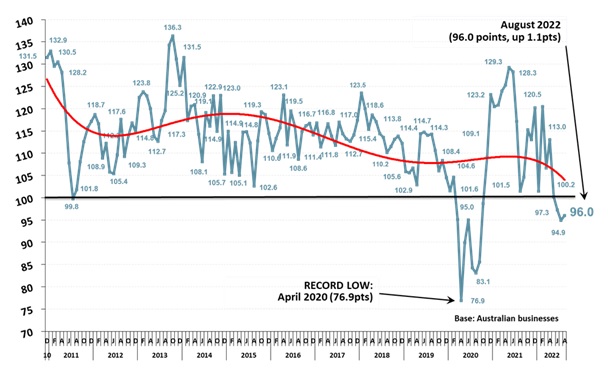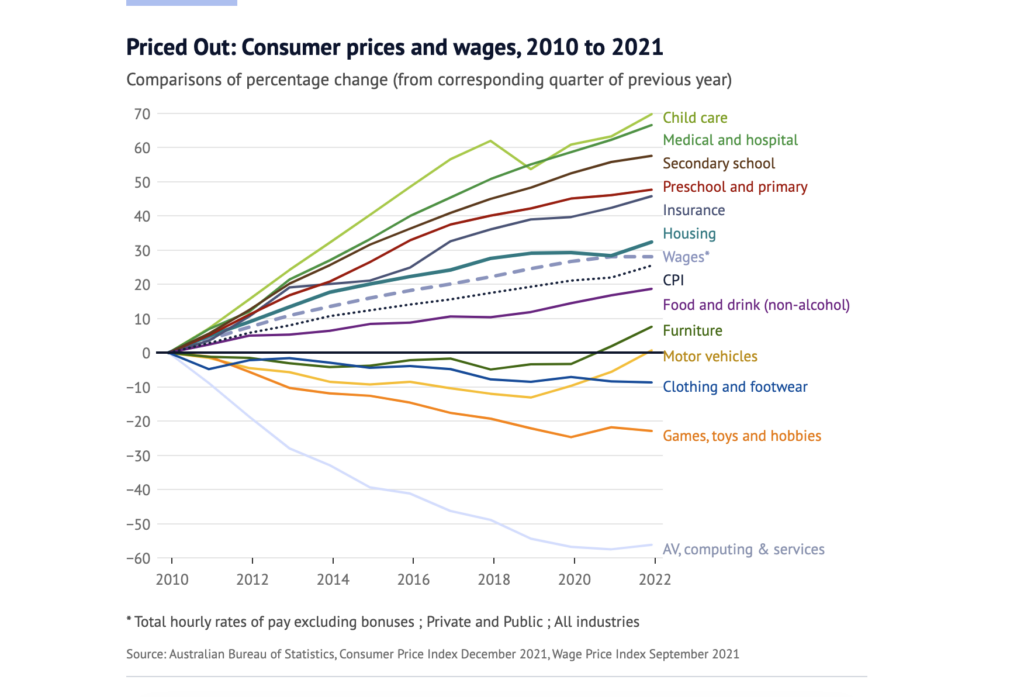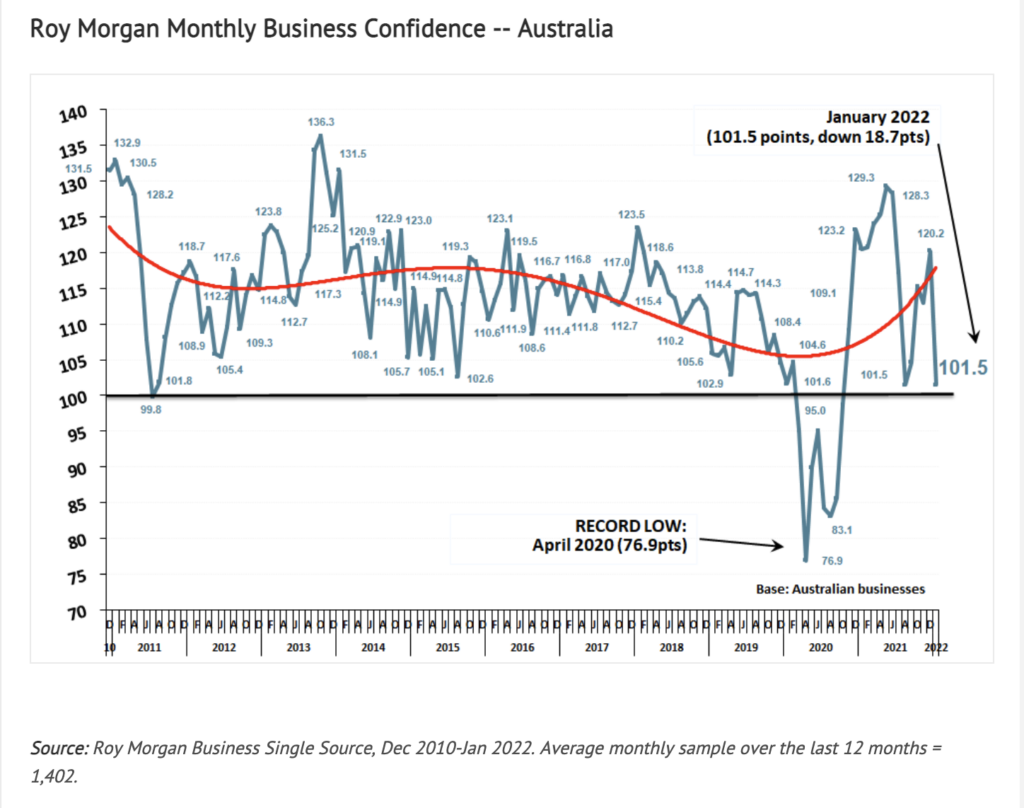Business Wrap – February 2023

As a debt tool for your business, Asset and Equipment finance can be one of the most flexible and cost-effective ways to get the significant asset you need for your business, without tying up your working capital. Banjo’s Head of Asset Finance, Christopher Cam explains how to get the best out of it.
What can I use Asset and Equipment Finance for?
Many of Banjo’s clients use it to replace ageing assets, or acquire new and used equipment that helps them service new or existing work contracts. Others use it to leverage off equipment that’s owned outright, to inject additional working capital into the business. Some specific examples might include:
How does Asset and Equipment finance help my business’ future?
Investing in new vehicles or plant and equipment can often be very expensive. If they’re purchased outright with general business cash reserves, it can impact your cash flow and ability to meet other competing working capital requirements. Securing Asset and Equipment finance allows your business to preserve working capital and pay for assets over a 12-to-60-month period. During the loan period, your business may experience an increase in business income generated by the asset.
When taking out Asset and Equipment finance, there’s no requirement for other collateral, as the lender will simply take a charge over the funded asset. They’ll also take into account the increase in operational productivity and efficiency, and the potential tax incentives such as the Federal Government’s instant asset write off.
Being able to purchase the latest equipment helps you to keep ‘ahead of the game’ and absorb the efficiency gains. Having new vehicles, plant or equipment helps to maximise productivity, and can reduce downtime and ongoing repair and maintenance costs.
There’s also the potential for an improvement in your credit profile by being able to make payments on time, thus having a positive impact on your credit scores.
What types of business is Asset and Equipment finance right for?
Any business that uses equipment daily to generate business income can benefit from this kind of finance, but broadly speaking, all types of business can use it to get ahead.
Your business’ growth and competitiveness are often fuelled by investment in motor vehicle, plant, equipment, and technology. Having up-to-date, reliable equipment that enables you to respond quickly to market changes, or stay ahead of the competition, will always reap strategic advantage for your business.
Certain businesses in certain industries may be more capital intensive than others. Some examples of this are:

Being able to purchase the latest equipment helps you to keep ‘ahead of the game’ and absorb the efficiency gains.
Christopher Cam – Head of Asset Finance -Banjo Loans
When should I be thinking about using Asset and Equipment finance for my business?
As a business owner you have many competing demands in keeping your business afloat, including focusing on customers, marketing, staffing and investments. You need less to worry about, not more.
So, when the time comes that you need funds to expand the business or upgrade its assets, you may be concerned about hurting the business’ working capital. This is where Asset & Equipment Finance is a smart option for acquiring new assets or equipment.
Can you share an example?
Banjo recently facilitated an equipment purchase for a transport and logistics company that was well placed to seize a growth opportunity. The company, which was previously focused on quarry haulage, was seeking to diversify into grain haulage. They had refitted their trucks to be suitable for the new source of income and had developed a good relationship with a reputable grain company. There was clearly further opportunity if the transport company could obtain a truck and trailer combo. Although the business had enough capital to purchase the equipment, Banjo provided an Asset and Equipment finance loan over a 5 year period so the business could avoid putting strain on their existing working capital. Instead, they redirected these funds towards other critical operating expenses such as labour and fuel.
Banjo’s dedicated loan specialists make a point of understanding your business so they can best help you navigate through your next equipment purchase.
Christopher Cam – Head of Asset Finance -Banjo Loans
What are the key things to look for in an Asset and Equipment finance lender?
Businesses need a quick turnaround on finance to help them take advantage of growth opportunities, so it’s important to work with a lender that can provide speedy, flexible, personalised asset finance solutions to suit your business.
Banjo’s dedicated loan specialists make a point of understanding your business so they can best help you navigate through your next equipment purchase.
Are there any common misconceptions about this type of finance?
Most businesses are aware that Asset and Equipment finance can help fund an equipment purchase.
However, some don’t realise that Asset and Equipment finance solutions can help them free up capital by offering equipment that’s owned outright by the business. Compared to an unsecured business loan, this type of finance has many benefits that include longer loan terms to assist with working capital, increased loan size depending on the asset security and competitive pricing options.
Whether the predicted global recession reaches Australia or not, small business insolvencies and payment defaults have risen recently.
According to Equifax, SME insolvencies have increased over the past two years. This has happened more sharply in 2022, with 20% more insolvencies in June this year vs the same month in 2021. However, it’s worth pointing out that current insolvency levels are lower than those of 2019, immediately pre-COVID.
At the annual SME Big Breakfast in Melbourne recently, Banjo and CreditorWatch gave a joint presentation about how businesses can protect themselves from insolvency. The level of interest and discussion showed that this is currently a very hot topic. Here are some of the insights from that session.
CreditorWatch’s Business Risk Index (BRI) August 2022 data continues to show a clear trend of growing defaults in B2B trade payments. As the BRI data is mostly sourced from small and medium businesses, the signs give some cause for concern. According to CreditorWatch, among the pressures on SMEs are a 4.6 per cent increase in labour costs, and purchase costs up by 5.4 per cent. While businesses can pass these increases on to consumers at this stage, with overall product prices increasing by 2.7 per cent and retail prices by 3.3 per cent, how long this will prevail, is not clear.
According to CreditorWatch’s Geographic Business Risk Index, the areas currently experiencing greatest risk of SME default or insolvency are parts of Western Sydney (Canterbury, Green Valley, Merrylands), Jimboomba in south west Brisbane, and Surfer’s Paradise. More broadly around the nation, the industries most impacted are food and beverage, followed by arts and recreation.
A company is regarded as insolvent (from an accounting perspective) when it can’t pay its bills as they fall due, and when its liabilities are more than its assets. Among the factors that could push a business over the edge are: poor cash flow management, over-expenditure, or scarcity of staff.
Equifax points to an unfortunate reality that when a business is financially distressed, too often those running it resort to doing the wrong thing. Corporate liquidators report that 71% of all reported misconduct involved breaches of insolvent trading conditions. This being, despite signs being evident the companies in question were insolvent or becoming insolvent. It goes without saying that this only leads to more complex problems for the business, not to mention being illegal. Being alert to warning signs and taking appropriate steps to manage the situation can help avoid disasters.
During an economic slowdown, even well-run businesses can begin to struggle. For example, if a supplier of hard-to-get materials or one of your key customers becomes insolvent, this can have a knock-on effect on your business, through no fault of your own.
To protect your business, it’s critical that you’re willing to confront reality, and take responsible steps to mitigate the situation.
The red flags that could indicate your business is in trouble include:
Even if your business is going well, with no specific danger signs, there is the potential for greater contagion risk in this period of economic uncertainty. For example, one of your clients may be having difficulty getting payments from their customers, which could result in an inability to pay, or to supply to you. Keep a close eye on your network of suppliers and customers, and keep in touch with them. As far as possible, understand the nature of any financial risks facing their business which could indirectly impact yours.
Some of the steps you can take to protect your business include:
With business sentiment still relatively positive, consumer demand remaining high, and supply chain issues finally resolving, hopefully Australia will navigate around the recession storms.
Hi, and welcome to the Banjo Loans Deal of the month. My name is Brendan Widdowson and I’m the Head of Sales at Banjo.
Today, I will share a recent Working Capital Loan scenario in the retail or grocery sector. This client is an established business owner, who has set up and run several IGA supermarkets and hospitality venues in NSW.
The business had an opportunity to secure a lease and establish a brand-new IGA supermarket. The newly leased land is in an up-and-coming suburb in Queensland, surrounded by several housing developments that require a local supermarket.
The client funded the fit-out of the new premises with working capital from the business, however, required additional funding to purchase stock and other equipment. A referral partner sought out Banjo to assist with this, as they knew we would be an ideal lender for this client.
Despite establishing a new business, the client was eligible for a Banjo loan as they have been successfully running the existing businesses for the past 4 years, with an annual turnover of $1.8M. Due to the business owners’ other ventures performing well, Banjo’s credit assessors recognized the strong financials and ability to repay the loan.
A $250,000 36-month Working Capital Loan was provided within 3 days of their application so the business could move forward with its new venture.
Thanks for watching. If you have any customers you feel could benefit from a Banjo working capital or asset finance loan, please do not hesitate to contact your local Business Development Manager from Banjo.
For more please follow us on LinkedIn at Banjo Loans and subscribe to our YouTube channel.
Whether it’s inflation, property values, employment levels, new car sales or copper prices, there are as many recession ‘tipping points’ as there are commentators on the subject. The economists’ jury is still out on the likelihood of Australia entering a full-blown recession, but the chatter is getting louder.
The traditional definition of a recession is two consecutive quarters of negative real GDP growth. But others, such as independent economist Saul Eslake, define it as a period in which unemployment rises by 1½ percentage points or more, in 12 months or less, and then until it starts coming down.
Currently, there are signs for and against an economic slump. In August 2022, the Roy Morgan Monthly Business Confidence indicator was 96.0 (up 1.1pts since July), the first monthly increase for four months since April 2022. This was the first rise in business confidence since the RBA began increasing interest rates in early May this year.

The August Roy Morgan index showed mixed results, with businesses saying they are concerned about the next year, and less likely to invest in growing the business in the next 12 months, yet more confident about longer-term prospects for the Australian economy. In short, businesses see some short-term pain ahead but are more upbeat about the longer-term horizon.
On the other hand, one of the indicators that economists and analysts watch is the price of copper, which is widely used in electronics, industry, transport, and renewable energy. According to the Sydney Morning Herald, the price of copper on the London Metal Exchange plunged by almost US$4000 a tonne between March and July this year. It has since risen by 10%, believed to be markets hedging their bets about whether a recession will be global or only in Europe.
There are several things that may buffer Australia against a recession, compared to other economies like the US, UK and New Zealand. Wage pressures haven’t yet made any material contribution to rising inflation, which should mean that the RBA doesn’t have to raise interest rates as aggressively as its counterparts in those and other countries. Our exports, especially energy products, are also strong.
Whichever way you define a recession, and whether this is a blip on the chart or a more sustained downward trend, it makes sense to ensure your business is as recession-proof as possible. Take a look at some of these strategies you can use to build in resilience before any downturn hits:
The Australian economy train may be pulling into Recession Station soon, or it may speed past to Business-as-Usual Central. Either way, a bit of planning and preparation will make for a smoother journey for your business.
To pre plan your cash flow needs, check out our flexible range of solutions including Flexi Working Capital Loans, Asset and Equipment Finance, Banjo Express and more to give you control and peace of mind in case of a recession.
Hello, my name is Jason Gatt, and I’m the Partner Manger at Banjo Loans for VIC/WA and TAS.
I’m excited to share our deal of the month, in which Banjo repeatedly helped this structural and architectural steel fabrication business overcome cash flow issues and manage its working capital better.
In business for 15 years, this established company have a healthy $2 million per annum revenue turnover, providing support to residential, industrial, and commercial sectors, and met Banjo’s initial eligibility criteria.
The business required operating funds as it was suffering from growing pains, cost pressures due to inflation and lagging accounts receivable that were all having a negative impact on its working capital and cash flow.
Having only borrowed from Banjo for the first time a few short months earlier, Banjo was thrilled they approached us to assist again, having been satisfied with the experience and service they received with their first loan. As Banjo were already familiar with the business and their journey ahead, we were able to increase their funding facility, and provide additional funding to assist with their general working capital and purchasing of materials.
From Banjo’s side, this client had proved to be a quality and reliable enterprise to do business with, with on time repayments on their original loan, we had no hesitation to assist this client again with another loan and help move their business forward.
An original 12-month loan of $75,000 was approved and funded, and then the subsequent additional 12-month loan of $50,000 was provided. Both loan applications were approved and funded within 2 days of the application submission.
Thanks for watching, and if you have customers, you feel could benefit from a Banjo working capital loan, please do not hesitate to call me. Likewise please keep an eye out for our soon to be released Asset Finance product.
For more please follow us on LinkedIn at Banjo Loans.
Banjo had the privilege of hosting Alan Oster, Group Chief Economist at National Australia Bank (NAB) on our recent webinar, where he shared his global and Australian macroeconomic outlook. Here’s a brief extract of his comments.
The global economy is slowing in 2022. If it continues to slow throughout 2023, we can expect the main impact in 2024.
The three main regions of concern are: China, Europe and Japan. China’s issues with Omicron, and the associated recent shutdown in Shanghai have had major impact. There have been falls in the Chinese data, retail sales are down 14%, and their central bank has cut rates and added extra liquidity.
The Russia/Ukraine war has of course fuelled concerns about Europe. Commodity prices are currently very high. If Europe and the G7 countries ban Russian oil, to which the Russian economy is very exposed, Russia may cut off gas supplies in the northern winter, which would cause major disruption in Europe at the end of 2022 and into 2023.
Japan’s growth is going backwards at the moment, and only weak growth of around 1.5% is expected later in 2022 and beyond.
Compare this to Australia, where despite a weak start to the year due to Omicron and the floods, there’s been a big acceleration in growth since COVID restrictions phased out. For example, by the end of May hospitality (about one third of the Australian economy) was shooting the lights out – the strongest Alan’s team has ever seen this sector.
NAB analyses data from its 5 million transactions per day, including consumer and business clients. On weekly business inflows, mining and agriculture were the strong performers last year. This year construction, manufacturing and transport are leading the surge, although mining continues to be strong. Given the seasonally adjusted data, retail is meeting the pre-COVID (2019) benchmarks but is still not where it should be.
NAB’s data shows that SMEs are doing well compared to the 2019 benchmark.
However, health and education are still struggling. Elective surgery has been slow to pick up, partly due to staffing issues. In education students are coming back, but not yet in big enough numbers, so the sector is well behind the 2019 benchmark.
In terms of business conditions and confidence, transport and construction are starting to flatten out. The construction sector is still optimistic, but Alan flagged problems on the horizon. This centres around fixed price contracts, which are proving to be problematic now that purchase costs are going up.
Increases in construction, transport, and manufacturing costs are running at around 5% per quarter, with flow-on effects to inflation.
Unfortunately, inflation is going to be around for a while. Alan uses the core inflation figure (as opposed to the headline number we usually read about), currently around 3.8%. He expects this to rise to around 4.5% and stay there for a while.
Where interest rates are concerned, the NAB team predict interest rate rises in June, July, August and November, and expect the cash rate to reach 2.1% by late 2022, then to peak at 2.6% in 2024.
Alan points out that monetary policy takes about 12-18 months to have its impact. “Monetary policy is like a piece of elastic with a rock attached. You pull the elastic, and nothing happens, you keep pulling and then all of a sudden you get a black eye! So it has to be handled very carefully.”
House prices in Sydney and Melbourne have seen a big slowdown, and Brisbane is also starting to slow. There are still strong bank approvals for housing, which is driven by owner occupiers just now. Alan expects that house prices will go down 10% overall, but in the context of the 22% rise over the last couple of years, it’s certainly not catastrophic. Eighty per cent of the home loans in Australia are variable, and on average, homeowners are 4 years in advance on their home loans, so they can broadly handle rate increases. However, some may panic, which will influence behaviour.
Alan points out that household savings are concentrated at the top end of income distribution. The middle-income group are essentially spending what they earn, so the cost of living is set to become a big issue in Australia, with consumer cash flow (and therefore spending) potentially drying up in about 6 months.
Unemployment will continue to fall to 3.5% and stay there till early next year, when it could rise to 4%. Australian wage growth has been below expectations for some time, but the national wage case is likely to pick up soon.
The number one lesson from the pandemic is: don’t have all your supply chain eggs in one basket. If you haven’t already, start to diversify your supply chain. India, Japan and Korea are good sources. Australia should also be strengthening its own manufacturing.
Overall, Alan is optimistic about the economy. The damage to our economy, and the death rate from COVID was considerably lower than other countries, so even with higher interest rates and slower global growth, the outlook for Australia is comparatively good.
If you would like to hear all of Alan’s thoughts and predictions for 2022, click here.
Many SMEs didn’t need a crystal ball to predict that inflation was coming, and are using different strategies to manage it, according to Banjo’s recent SME Business Compass report.
With inflation now running at 5.1%, a reversal of the deflationary environment we’ve been in for the last few years has been looming on the horizon for some time.
In response, the RBA raised interest rates from 0.10% to 0.35% in May for the first time since November 2010, and many mortgage holders are no doubt starting to feel the pinch as the banks follow suit.
According to the Australian Financial Review, the Reserve Bank has ratcheted up its central forecast for headline inflation this year to about 6 per cent, although it expects this will ebb to around 3 per cent by 2024.
The National Australia Bank has been quoted as saying it expects the Reserve Bank to lift the cash rate to 1.25 per cent by the end of the year, and that it will peak at 2.5 per cent by 2024.
Before we feel too sorry for ourselves, this situation is not unique to Australia. According to Trading Economics, our inflation rate is currently lower than many first world economies, including the US (8.5%), UK (7%), Germany (7.4%) and New Zealand (6.9%). The US Federal Reserve has been hiking up interest rates since March this year, and the Bank of England has been doing so since late 2021.
The global reasons for these inflationary pressures include the pandemic, and lately, the war in Ukraine. These twin demons have, among other things, severely disrupted the supply chain and put oil prices into the stratosphere. From a local perspective, the early autumn floods were also a contributing factor.
As noted above, many SME owners have seen this coming. At the time Banjo surveyed businesses in February and March this year, over half (55%) were concerned that inflation will be a barrier to growth within the coming year. To mitigate the impacts of inflation, the broad spectrum of businesses surveyed are responding by increasing prices (42%) or reducing supply costs (37%).
However, it’s interesting to drill down into the some of the different sectors. Businesses in the retail industry (70%) are the most concerned about inflation, higher than the overall market (55%).
The anxiety level varies by industry, as do the plans for mitigating the effects of inflation. Looking at four key SME industries that have been hard-hit by the pandemic – retail, hospitality, construction and manufacturing – there were some marked differences (see graph below).
The highest level of concern was felt by SMEs in retail, who also felt the least able to increase prices, but most likely of the four to cut costs.
Hospitality SMEs were most likely to increase prices (68%) than the other 3, and also compared to the wider market, 42% of whom were prepared to raise prices.
Construction and Manufacturing were roughly on par in terms of their inclination to raise prices and lower costs.

While consumers in some sectors can be more price-sensitive than others, in a period of high inflation, many businesses can’t afford to sacrifice margin in the face of rising costs. Talk to your accountant, bookkeeper or lender about how your business can best meet the challenge of the current inflation environment.
A strong theme is emerging from two consecutive years of Banjo’s annual SME Compass research among the leaders of over 500 SMEs* across Australia.
A substantial number of the SMEs surveyed increased investment in their businesses in response to the pandemic, and it seems to be paying off for them. The research found that the businesses that kept investing, and usually borrowing to invest, are consistently growing and meeting or exceeding their targets.
This seems to have contributed to the health of the sector post-COVID, with a lot more Australian SMEs (55%) achieving or exceeding their revenue targets in 2021 than the previous year (45%).
The biggest increases in investment were in new technology (61% in 2022 vs 51% 2021) and marketing (50% vs 41%). Acquiring real assets and moving all or part of the business online were also high up the list.
SMEs who invested in new technology, purchased new assets and increased headcount were most likely to achieve success by exceeding their revenue targets. Thirty per cent outperformed their targets in the last year, up from 25% the previous year.
This may be one of the key reasons Australian SMEs are coming out of two years of the pandemic with a positive outlook and a continued eagerness to invest in their business. With 69% expecting their revenue to grow over the next 12 months, and 83% confident about the future of their business, there’s high optimism for the year ahead.
Those who are anticipating growth say they’ll be investing in their business in 2022 by improving existing products, investing in new technology and spending more on marketing than last year.
Forty seven per cent of businesses are planning growth through acquisition – up from 42% in 2021. This year, a greater proportion of SMEs (45%) are using acquisitions to add value to customers by strategically enhancing their products’ “stickiness” compared to last year (33%). Acquisitions are also increasingly being viewed by respondents as a way to grow product offering, revenue and profitability.
Despite the upbeat outlook and strong progress, there are some roadblocks. Many SMEs are still frustrated by the traditional bank borrowing process.
A majority (62%) of SMEs continue to face challenges when trying to secure funding in this way. The glacial pace of traditional bank procedures was the main frustration in 2022. With 40% of SMEs turning to the major banks as their first funding option, this suggests many are not fully informed about the alternative faster and more efficient loan options available to them.
Sixty three per cent of SMEs intend to fund their growth in the coming year through loan facilities such as bank loans, founder investment and credit facilities. With secured business loans and term loans the most commonly used financial products, this suggests many are yet to understand that unsecured loans are a viable option.
Other challenges have certainly been faced in 2021 and early 2022, including supply chain issues and labour skill shortages. But it seems many businesses have used strategic measures, including further investment, to overcome these.
SMEs certainly rose to the challenges of the past year, and are displaying the optimism, business savvy and flexibility needed to help them navigate whatever 2022 throws at them
*the respondents were from a broad cross-section of businesses, none of whom were Banjo clients.
The Australian economy is currently facing some potential challenges, including inflation, wages growth and an anticipated rise in interest rates. In this edition of Business Wrap, we look at the flow-on effect to businesses and households.
Included is our conversation with the Australian Steel Institute Chief Executive, Mark Cain who explains the effects these microeconomic issues are having on his members.
Many factors can cause inflation. The most common is companies passing their increased costs of production and distribution of goods and services onto consumers. In a recent Business Wrap, we talked about how persistent disruptions to supply chains and distribution networks are having a flow-on effect on costs globally, causing a heightened level of uncertainty.
Australia is also now experiencing wages pressure – more on this below.
For more information check out the Australian Bureau of Statistics figures.

Inflation in itself is not necessarily unhealthy, but it becomes a problem when it goes on for a prolonged period and wages don’t grow at the same rate – diminishing the buying power of consumers.
With inflation rising to 3.5 per cent in the December quarter, the Reserve Bank of Australia (RBA) is keen to see wages rise as well.
Reduced immigration of skilled workers to Australia due to COVID has created a tight labour market. Employers are under pressure to increase wages to stay competitive and attract qualified talent in a limited resource pool.
Unions are starting to push for 3 per cent annual pay rises in wage negotiations. While recent data from the December quarter showed that wages were starting to rise, those increases are not keeping up with inflation. The February ABS wage price index indicates that annual wages growth is at 2.3 per cent versus the inflation rate of 3.5 per cent.
According to the ABS data, real wages have fallen by 0.8 per cent since 2019, the first time this has happened since the turn of the century.
The Australian Chamber of Commerce and Industry Chief Executive Andrew McKellar has called for improvements to Australia’s productivity and economic efficiency, stating that until that happens, “we won’t see the stable and sustainable increase to wages the community expects.”
The Productivity Commission’s 2017 recommendations for boosting productivity – which include a wide range of measures like an overhaul of intellectual property laws, road user charges, opening up the pharmacy sector to competition, and a single effective price on carbon – are due to be revised and updated.
The RBA’s monetary policy has kept interest rates at record low levels – with the cash rate currently at 0.1%. This has arguably created a confidence that has pushed investors into riskier investments and artificially inflated stock prices and real estate. The lower rates have also punished savers who wanted to park money for a return with minimal risk.
Seven Group Holdings’ CEO Ryan Stokes said recently that the low-inflation environment a generation of investors has got used to, is on its way out.
During the COVID-19 pandemic, the RBA injected money into the economy, through the purchase of government bonds, a practice known as quantitative easing. At its February 1, 2022, meeting, the RBA announced it would stop pursuing this strategy by February 10, 2022. This means a rise in interest rates could occur in the not-too-distant future.
However, as mentioned earlier, the RBA makes the point that we’ll need to see wages growth above 3.0 per cent before there’s any substantial rise in interest rates.
Economists have had to grapple with one challenge: the Australian dollar (AUD) has barely reacted to the broad price surge in energy commodities over the past six months. Will this continue?
The medium-term forecasts for the AUD have been downgraded, as local economists expect the US Federal Reserve to raise interest rates well before the RBA.
The Australian Financial Review’s quarterly survey of 29 economists predicts the AUD will appreciate to merely US73¢ by June 2022, slightly down from US74¢ expected in the September 2021 quarter survey.
This affects the economy as higher interest rates increase the value of the AUD. Assuming the AUD appreciates (ie, the exchange rate increases), the relative price of domestic goods and services will increase. At the same time, the relative cost of foreign goods and services will fall. Economically, as we export more relative to imports, our net exports increase, and our terms of trade will be higher.
The Roy Morgan Business Confidence survey reported that Australian businesses were mainly pessimistic about future economic conditions plunging by 18.7pts (-15.6%) to 101.5 in January 2022.

A survey conducted by ANZ and Roy Morgan shows a similar trend was observed in consumer sentiment. With a sharp drop of 7.6 per cent in consumer confidence in early January 2022 down to 97.9, representing its lowest level since October 2020.
In New South Wales and Victoria, extended COVID-19 lockdown periods contributed to a sharp decline in business confidence in the first quarter of 2021-22, as State Government restrictions curtailed business operations. However, business confidence is expected to recover strongly over the remainder of FY 2022, as lockdowns in most States end.
As COVID stimulus packages recede, the Australian economy has demonstrated robust domestic growth. There’s further optimism in the suggestion from business leaders that the supply chain issues will soon pass. So, while some inflation is inevitable, it is predicted to be manageable.

The Australian Steel Institute (ASI) is Australia’s peak body representing the entire steel supply chain from the manufacturing mills through to the end-users in building and construction, heavy engineering and manufacturing. Many ASI members are small to mid-sized businesses.
Banjo caught up with ASI Chief Executive Mark Cain, to hear first-hand how the current economic environment impacts the small to mid-sized steel businesses among its members.
Currently, global steel prices are at extremely high levels, and this, combined with long lead times, is causing some consternation for our members.
For example, roofing sheets needed for residential buildings usually have a lead time of 1-2 weeks. There are examples where this has blown out to 12 weeks! These new lead times have put pressure on our members, as they’ve found it difficult to source materials and schedule their work accordingly. In addition, this long lead time forces businesses to purchase enough materials to try and get ahead, which may put pressure on their working capital.
Members are also feeling the effects of the skilled labour shortage, putting pressure on wages.
Overall, the industry is performing well despite these microeconomic challenges. Infrastructure spending and building are strong across the country, so steel is in high demand, including in rural Australia where the drought has broken.
This is allowing some business owners to consider investing to meet this demand. Some are looking for short-term financing to help fund their expanded capability and to finance capital equipment.
We’re encouraging project managers to work with their supply chain to give plenty of notice of their requirements. This allows businesses to plan and meet their demands and helps to give confidence that the supply chain can deliver.
But if orders are left to the last minute, assuming that steel supplies are yet to come, businesses could be disappointed.
Many governments coming out of the pandemic are priming their economies through infrastructure spending. We’ve found that global demand has been strong, limiting the surplus capacity available to import steel into Australia.
When the Australian dollar is higher to the US dollar and steel is traded internationally in US dollars, imported steel would be more affordable. However, steel needs to be available.
As I mentioned before, the availability of skilled labour is a big challenge ASI members are facing. ASI is engaging with various governments across the country to discuss how to tackle this problem.
Discussions range from strategies to solve the lack of skilled immigration, to the development of training schemes. ASI is also working on initiatives to attract local workers to the industry. We’re running a range of promotional activities to make the steel industry even more appealing to domestic candidates. Some of the activities involve ASI members talking to high school students, and outlining the vocational opportunities available in the steel industry.
If your business is feeling the pressure of some of these current events, we encourage you to download your free copy of Banjo’s easy-to-read guide The Top Funding Alternatives to Help Grow Your Business Faster. It may be able to assist you in understanding which funding option is right for your business during this time.